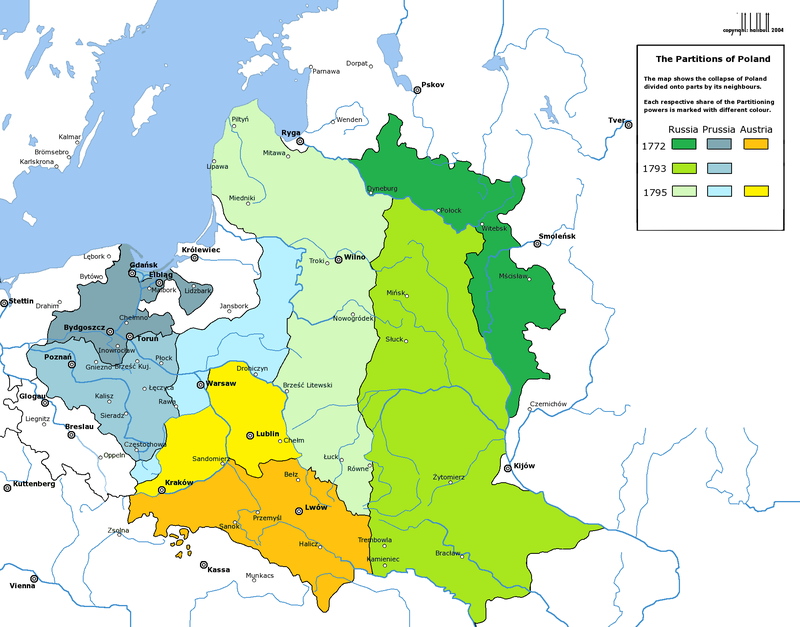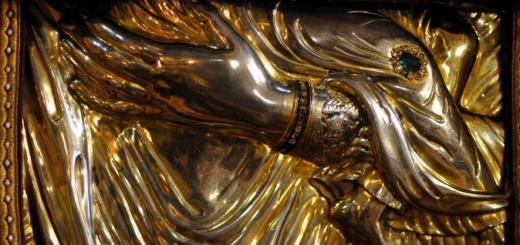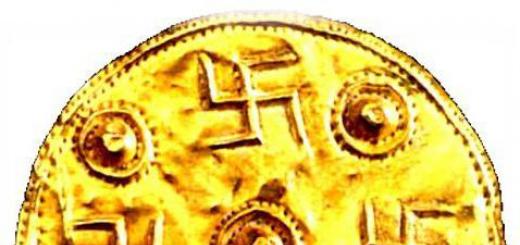The first section of the Commonwealth
On February 19, 1772, a secret convention on the first partition was signed in Vienna. Before that, on February 6, 1772, a secret agreement between Prussia and Russia was concluded in St. Petersburg. This was done so that the Poles, scattered among themselves, did not have time to rally before seizing the territories. The executive body of the Bar Confederation was forced to leave Austria after joining the Prussian-Russian alliance. And the Confederate forces did not lay down their arms. Each fortress, where its military units were located, held out as long as possible. The Confederates pinned their hopes on France and England, but they remained on the sidelines until the very end, until the partition took place.
At the same time, having entered the territory of the Commonwealth, Russian, Prussian and Austrian troops occupied the areas distributed between them by agreement. The Partition Manifesto was soon announced. The Partition Convention was ratified on September 22, 1772. The territory of 92 thousand km² with a population of 1 million 300 thousand people passed under the authority of the Russian crown.
The second section of the Commonwealth
After the first partition of Poland, a "patriotic" party arose that wanted a break with Russia. This party advocated the development of the economy and building up its own military power. She was opposed by the “royal” and “hetman” parties, which were set up for an alliance with Russia. The Russian Empire entered the war with the Ottoman Empire in 1787, by which time the Patriot Party prevailed in the Sejm and Prussia provoked the Sejm to break with Russia. The Polish-Lithuanian Commonwealth was brought to such a helpless state that it had to conclude a disastrous alliance with Prussia, its enemy. The terms of this union were such that the next two sections of the Commonwealth were inevitable.

The constitution, adopted on May 3, 1791, entailed intervention from neighboring Russia, which feared the restoration of the Commonwealth within the borders of 1772. The Russian-supporting “hetman” party created the Targowice Confederation, enlisted the support of Austria, and opposed the Polish “patriotic” party, which supported the unfavorable Constitution. In the battles, the Lithuanian and Polish armies were defeated, the supporters of the constitution left the country, and in July 1792 the king joined the Targowice confederation. On January 23, 1793, Prussia and Russia signed an agreement on the second division of the Commonwealth, according to which Russia received a total of about 250,000 square kilometers of territory and up to 4 million inhabitants. In 1793, Catherine II issued a manifesto "On the accession of the Polish regions to Russia."
The third section of the Commonwealth
The defeat of the Kosciuszko uprising in 1794, which was attended by those who disagreed with the division of the country, played a final role in the division and liquidation of the Polish-Lithuanian state. On October 24, 1795, the countries participating in the partition determined their new borders. As a result of the third partition, Russia received Lithuanian and Polish lands with a total area of 120 thousand km² and a population of 1.2 million people.

In 1797, the participants in the division of the Commonwealth concluded the "Petersburg Convention", which included resolutions on issues of Polish debts and the Polish king, as well as an obligation that the monarchs of the contracting parties would never use the name "Kingdom of Poland" in their titles.
Napoleon managed to restore the Polish state again for a while in the form of the Duchy of Warsaw under the crown of the Saxon king, but after his fall in 1814, Russia, Prussia and Austria again divided Poland.










